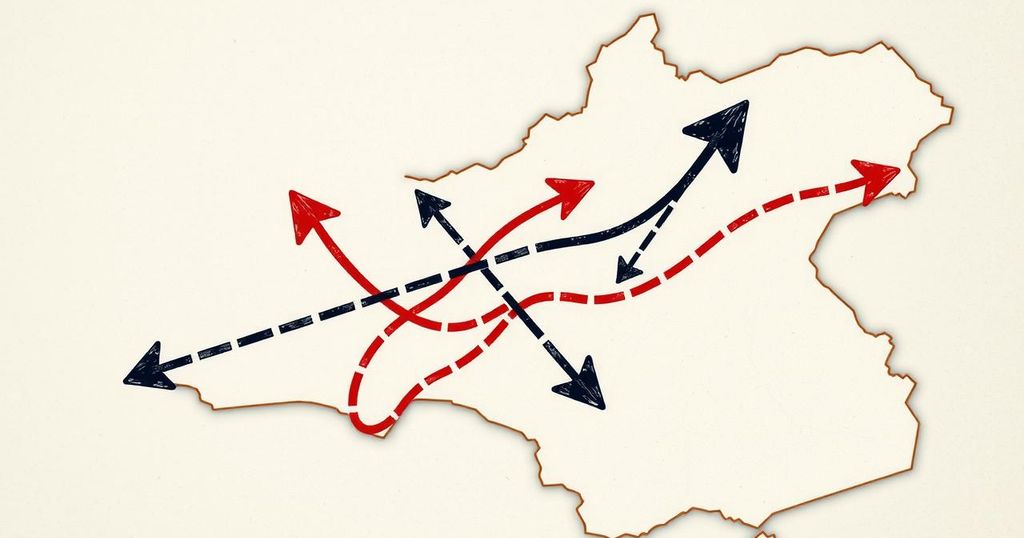Maps depict significant territorial changes in Sudan’s conflict as the SAF regains ground around Khartoum, yet fatalities have surged, reaching their highest levels since mid-2023. The war has displaced nearly 13 million people, with a profound humanitarian crisis impacting both Sudanese civilians and neighboring nations.
Maps reveal the shifting dynamics of the Sudan conflict as the Sudanese Armed Forces (SAF) regain territory, particularly around the capital Khartoum. However, these territorial gains are overshadowed by ongoing violence; fatalities have peaked since mid-2023, and approximately 13 million people remain displaced, making the future of the conflict uncertain.
The war in Sudan is rooted in the coup that disrupted a civilian government in 2021. Following this, the two factions responsible—SAF and the Rapid Support Forces (RSF)—turned against each other, leading to an all-out war that erupted in April 2023. The RSF initially gained significant control, particularly in eastern Sudan, capturing key territories like Singa in Sennar State.
By mid-2024, however, the tide began to shift as SAF regained critical territories, including the Jebel Moya mountain range and the town of Soba near Khartoum. Both forces are now engaged in fierce battles around the capital and in el-Obeid, with SAF asserting they are making significant inroads in these strategic locations.
Using open-source techniques, social media content, and local media reports, territorial maps demonstrating control shifts have been reconstructed. These changes have exacerbated the humanitarian crisis, leading to significant civilian suffering and casualties. The Armed Conflict Location and Event Data group (ACLED) reported a minimum of 28,000 deaths, with true estimates potentially reaching 150,000.
The conflict has instigated a massive displacement crisis, with the UN reporting that 12.8 million individuals have been displaced, which is over one-fifth of Sudan’s population. Among these are 5 million children, according to UNICEF. Many displaced individuals reside in refugee camps within Sudan, while hundreds of thousands have sought refuge in neighboring countries such as Chad, Egypt, and Uganda.
The war’s impact transcends Sudanese borders, intensifying regional instability as civilians bear the brunt of the violence. As the situation deteriorates, the Sudanese populace remains hopeful for an end to the ongoing conflict.
The conflict in Sudan has resulted in extensive territorial shifts, primarily beneficial for the SAF. Yet, these military gains occur alongside a humanitarian catastrophe, with significant loss of life and widespread displacement. The ongoing consequences of the war continue to affect not only those within Sudan but also neighboring countries, highlighting the urgent need for conflict resolution and humanitarian intervention.
Original Source: news.sky.com






